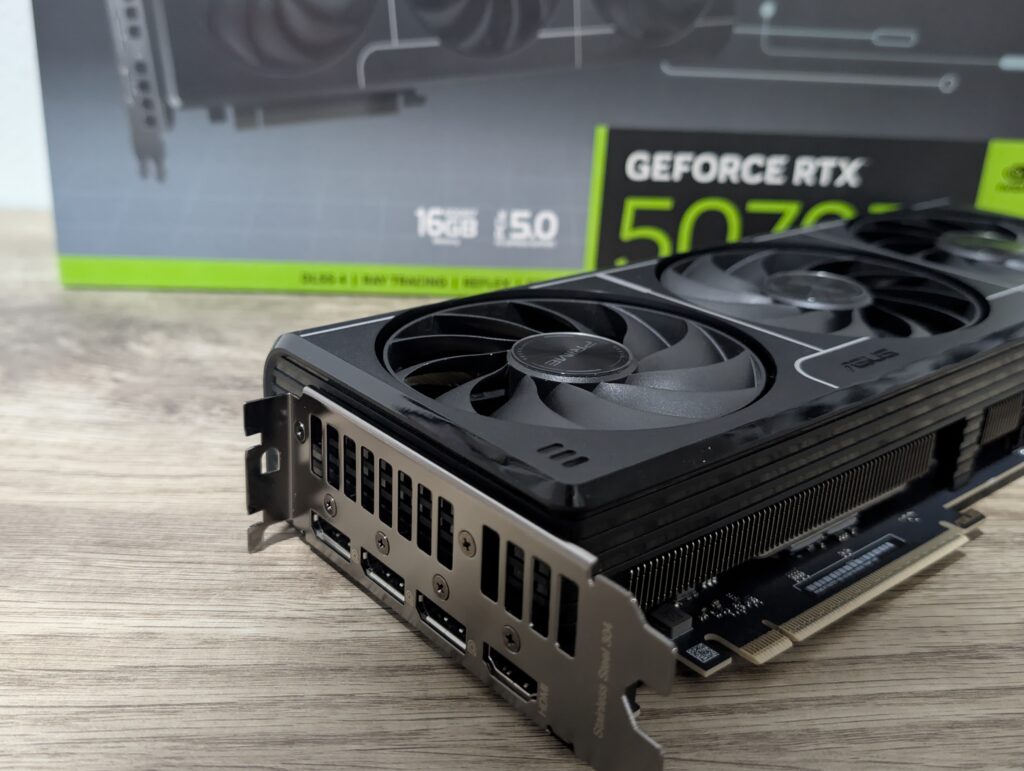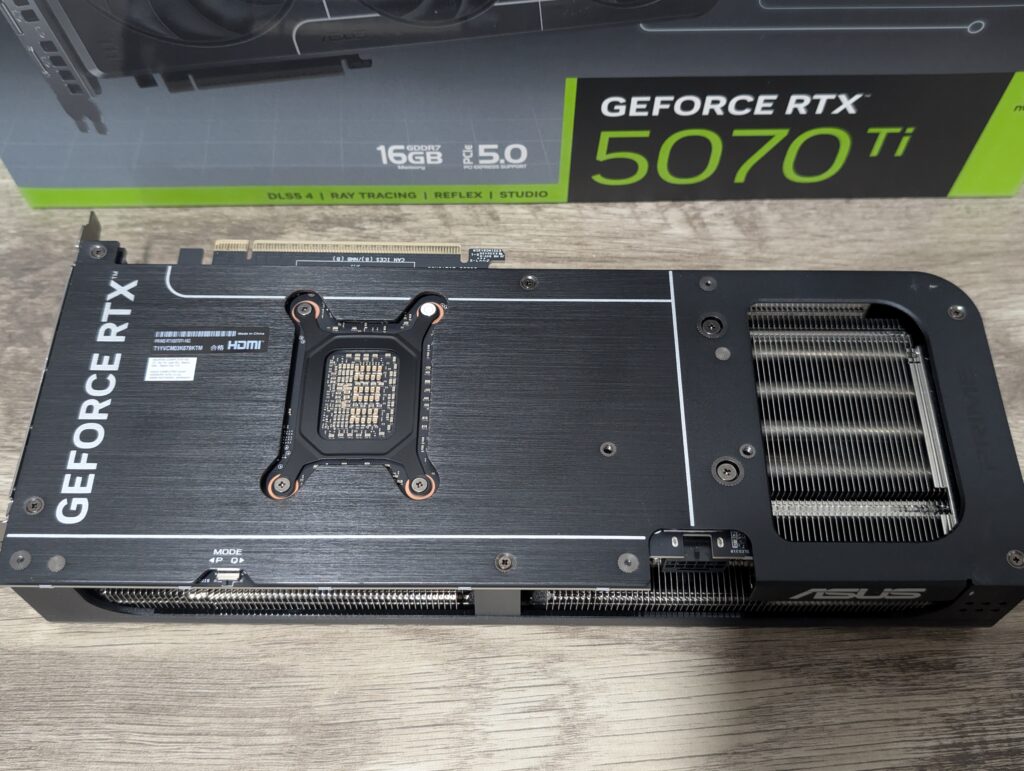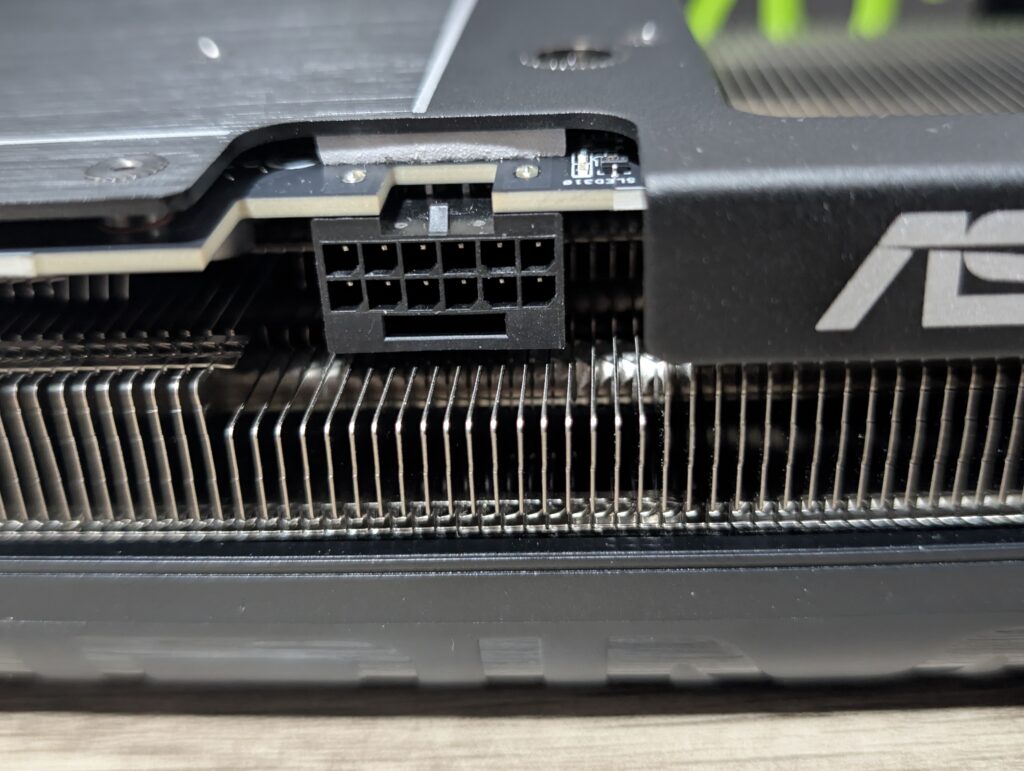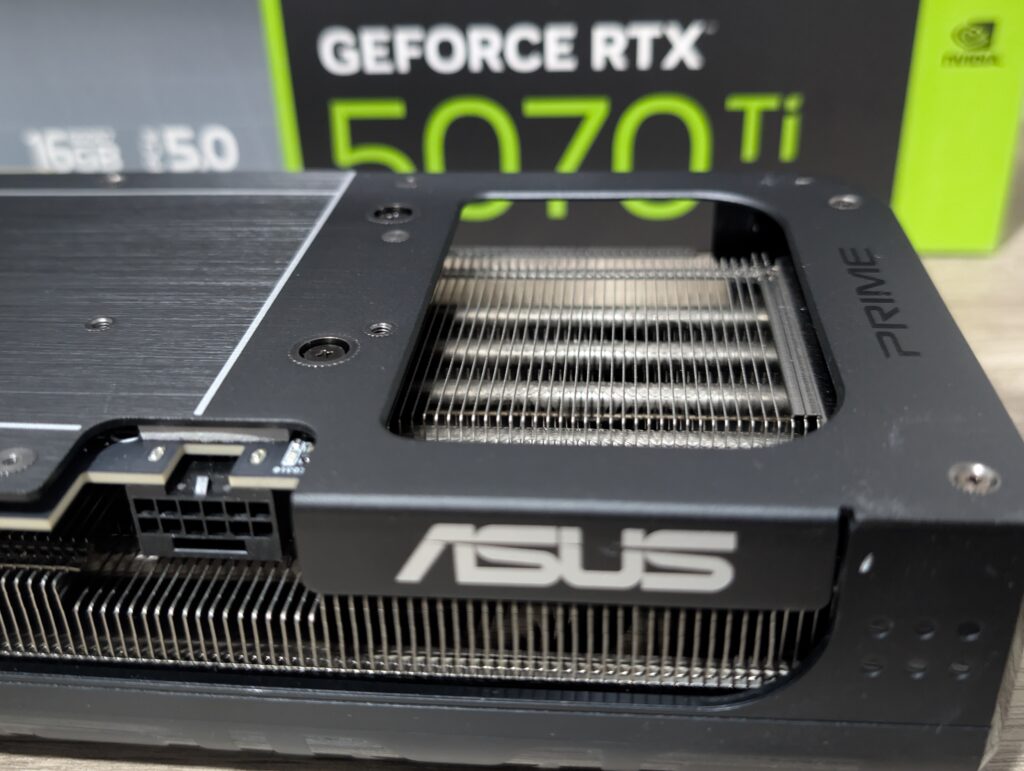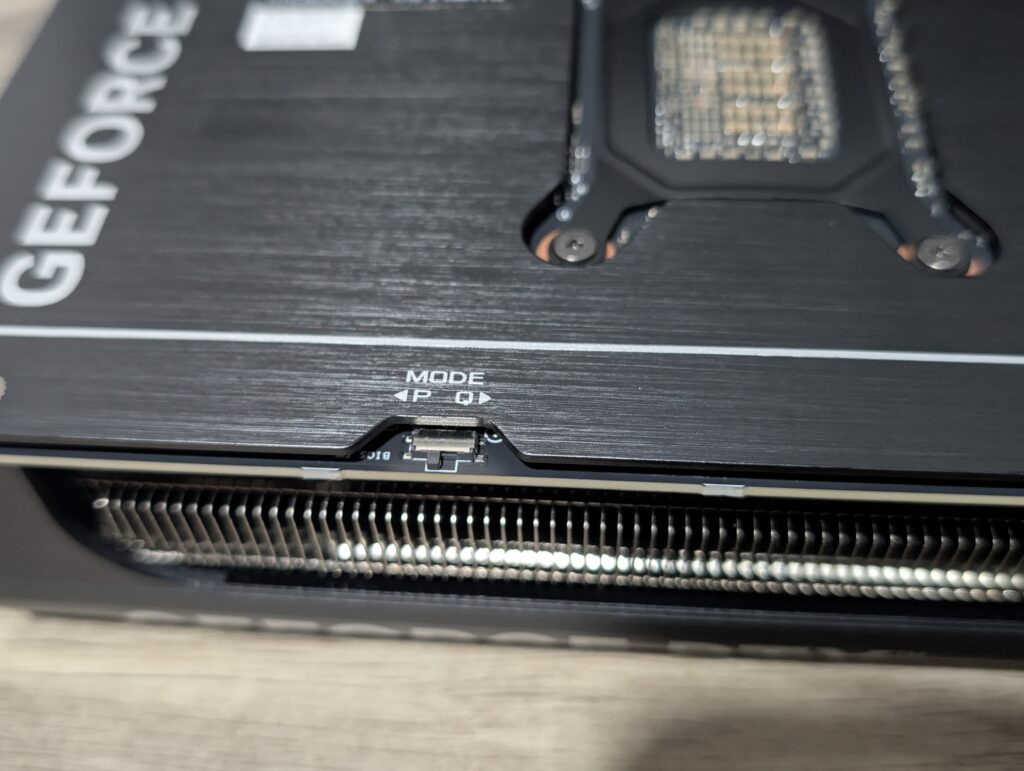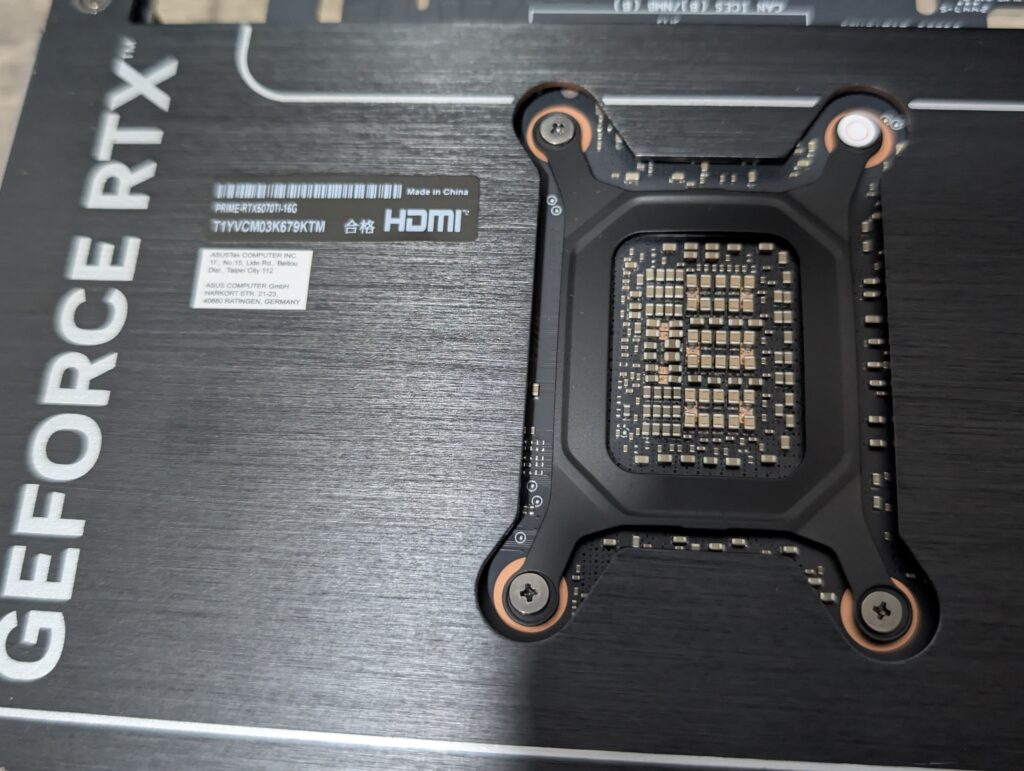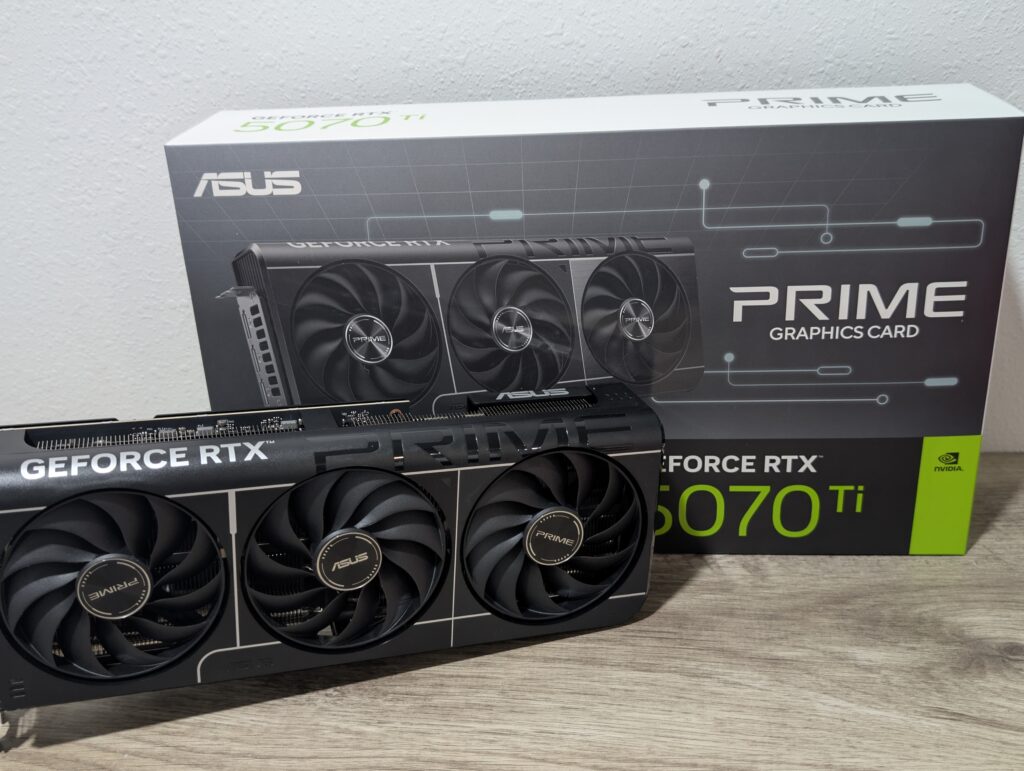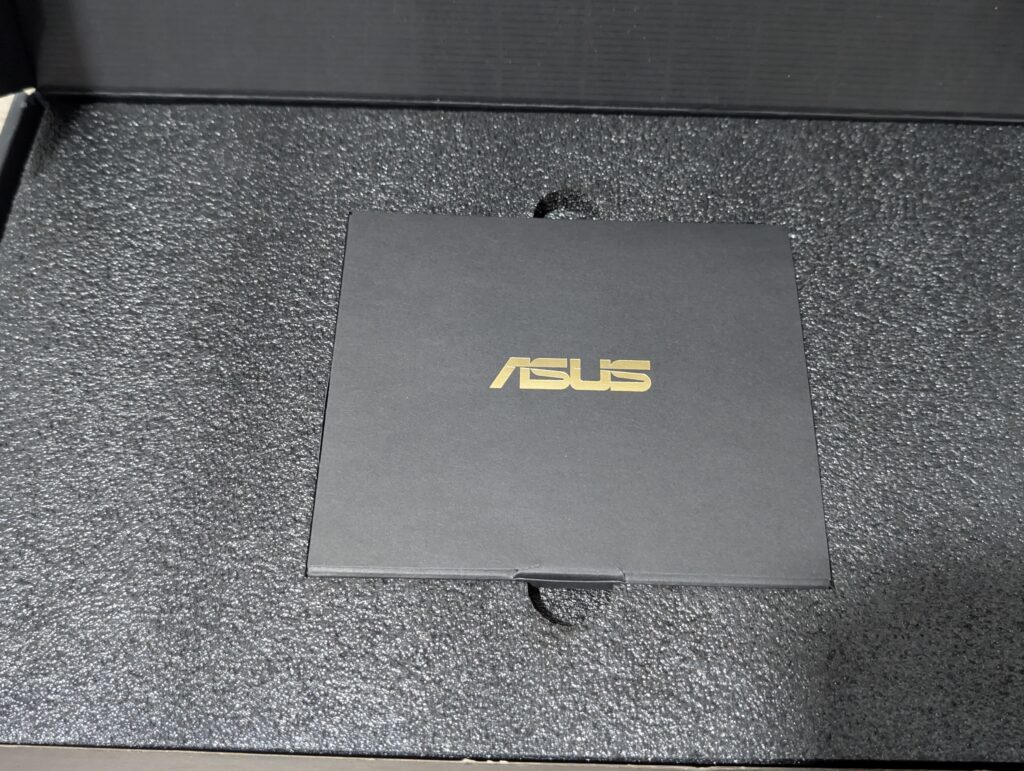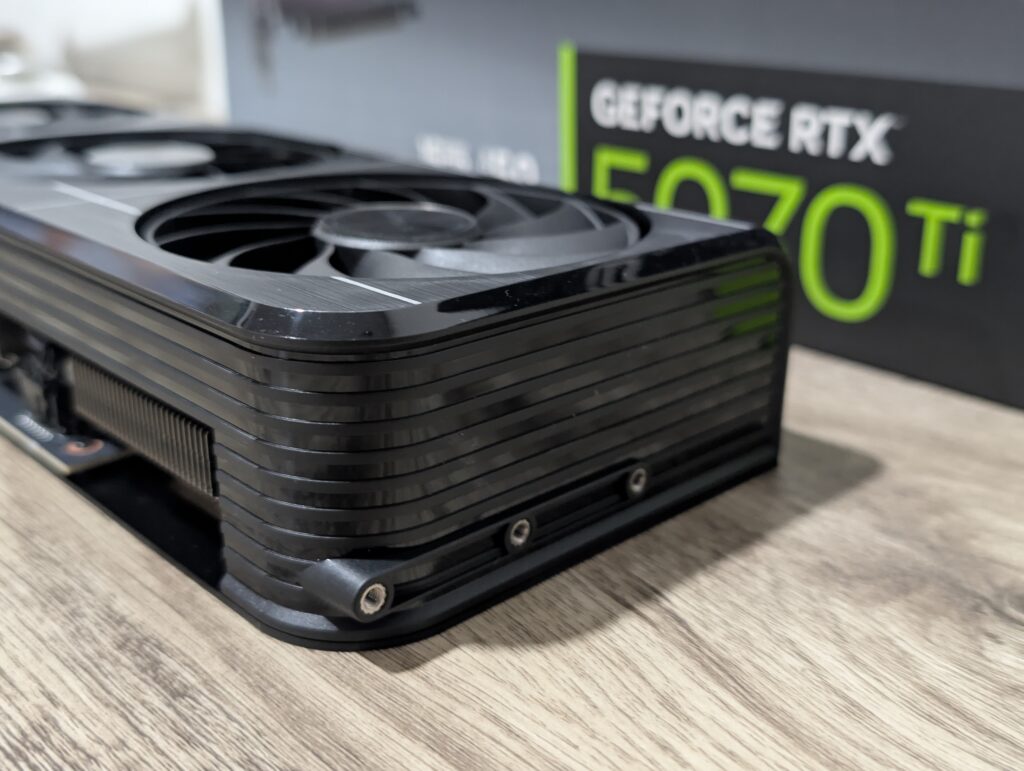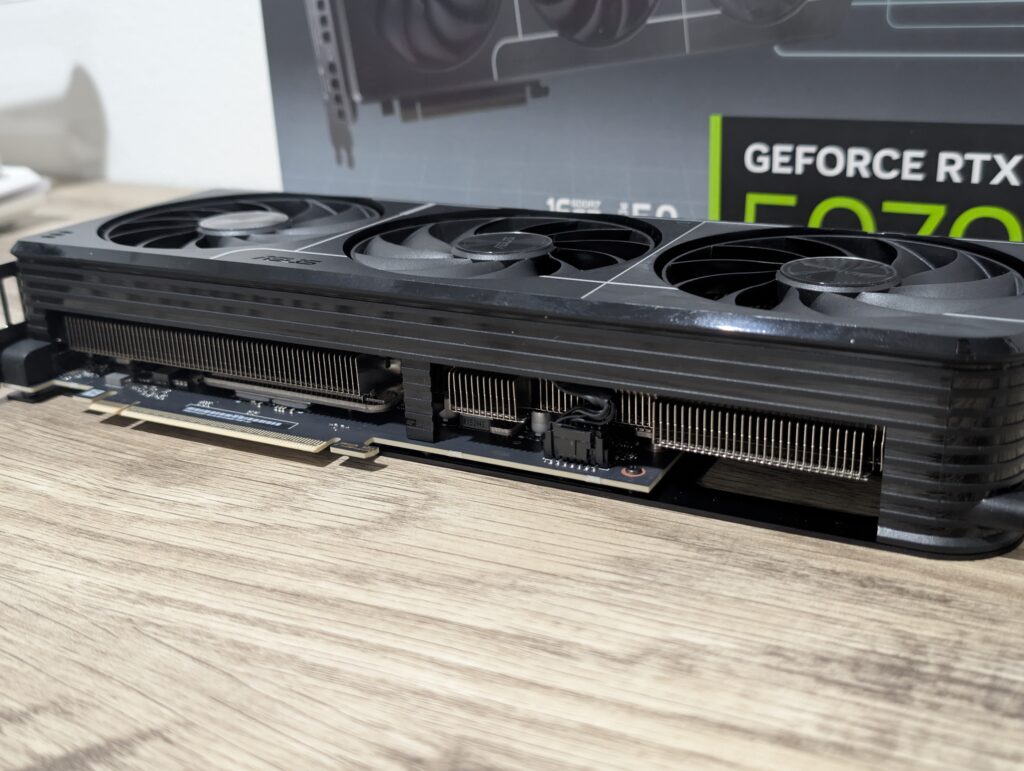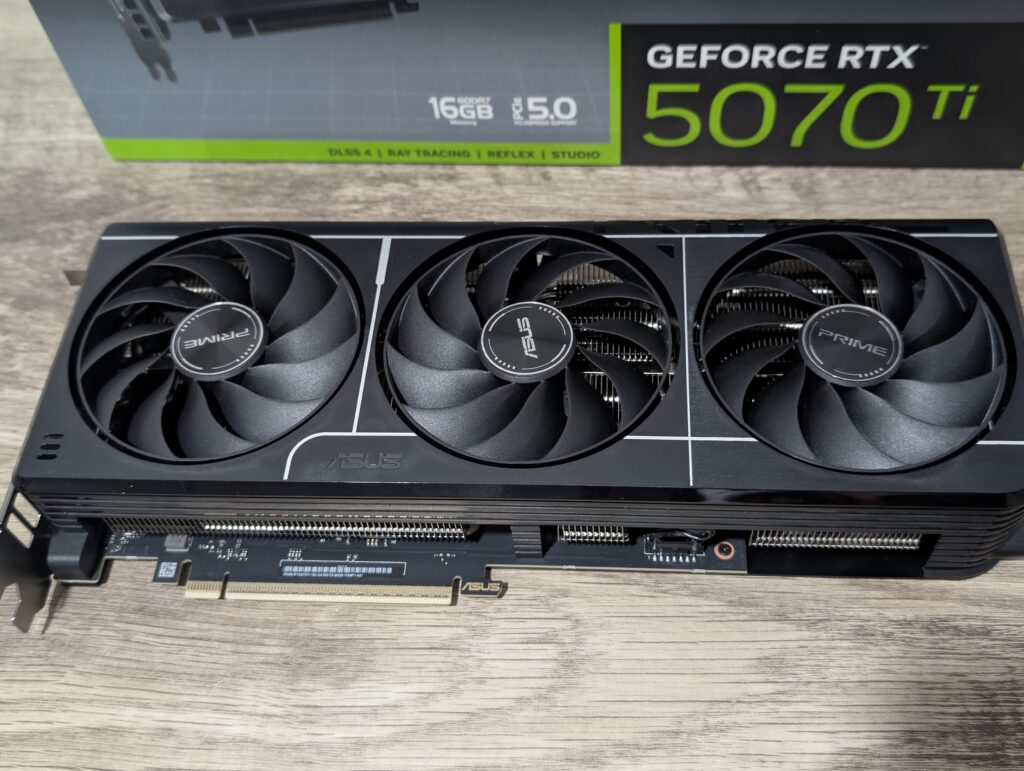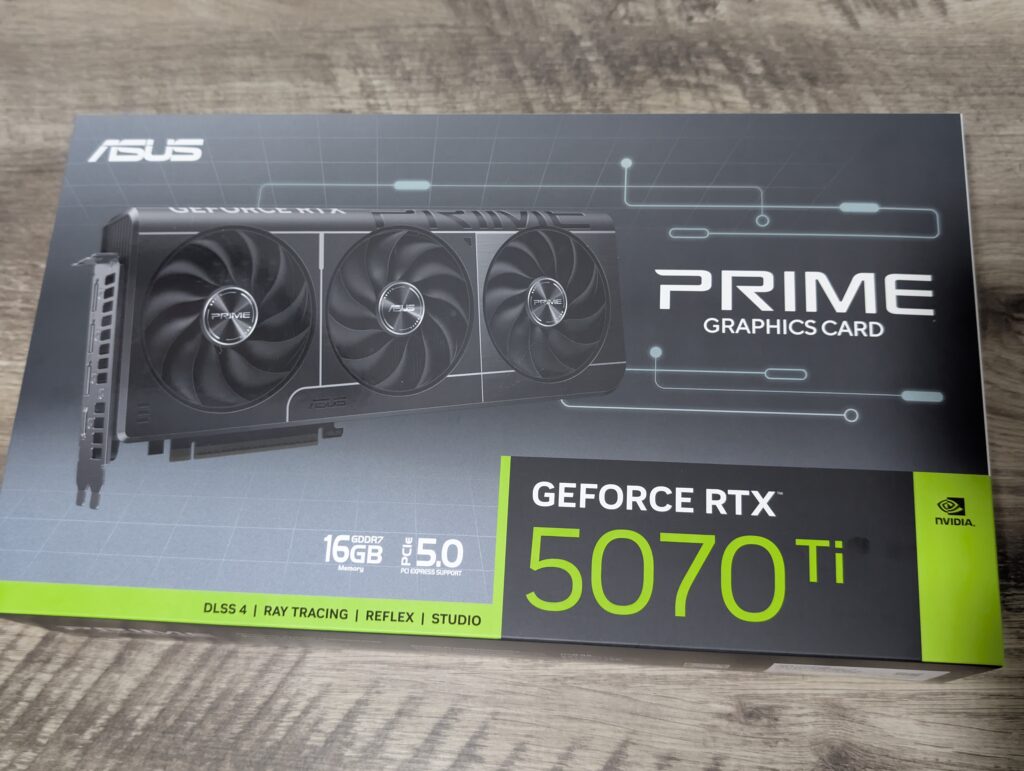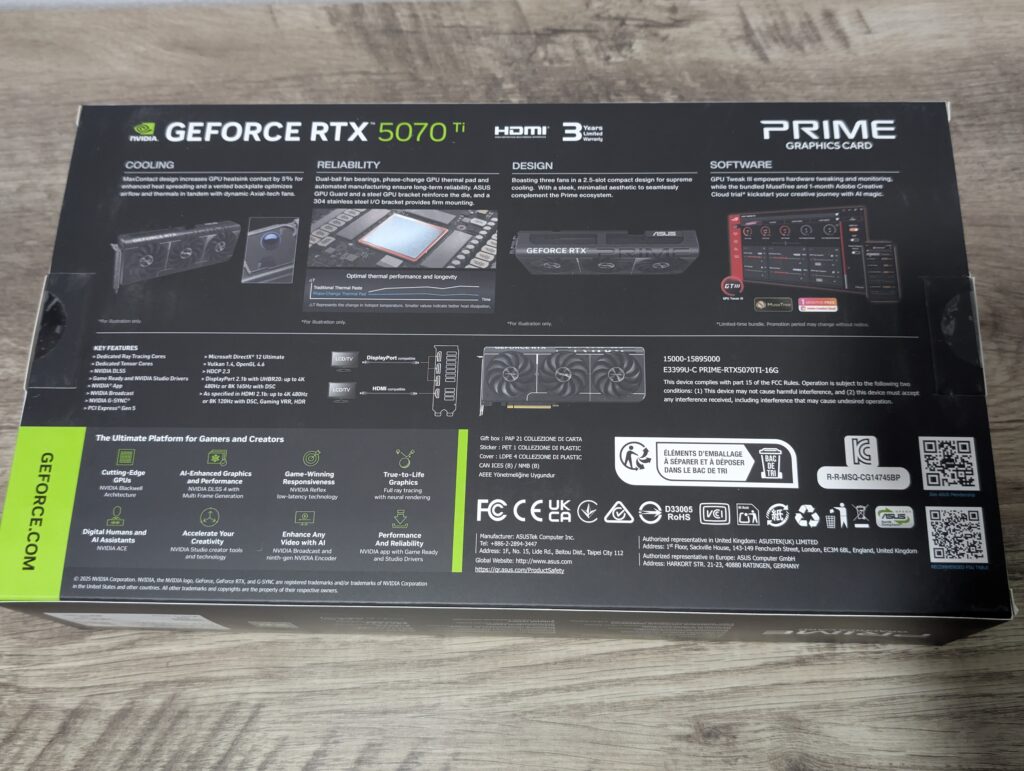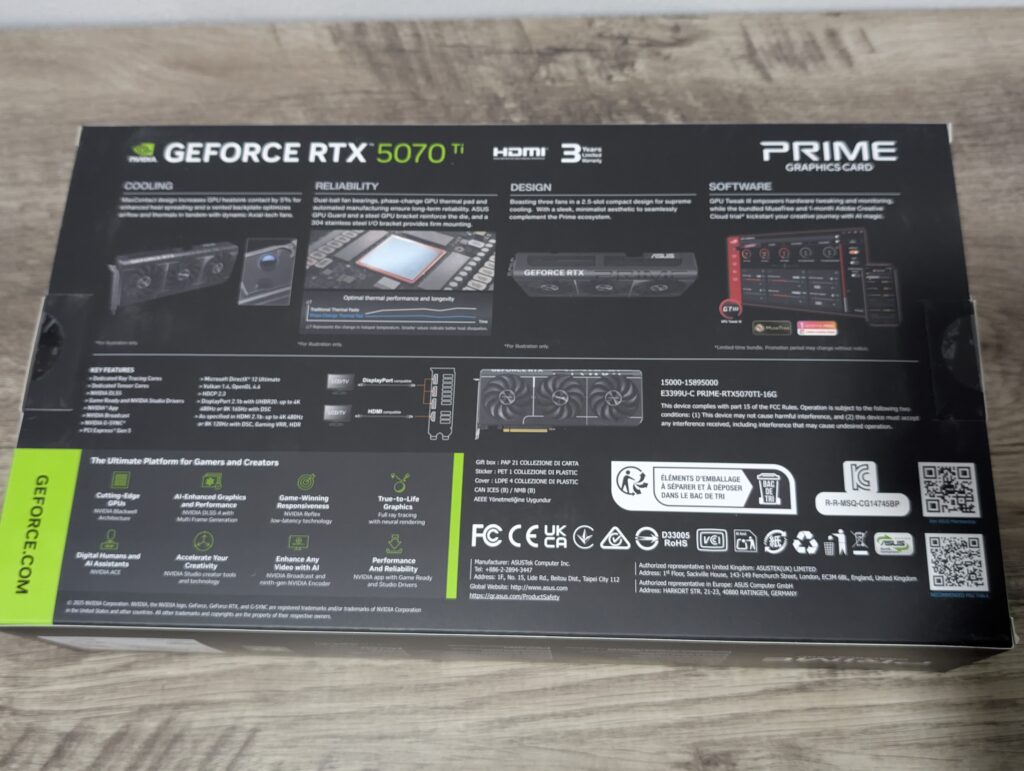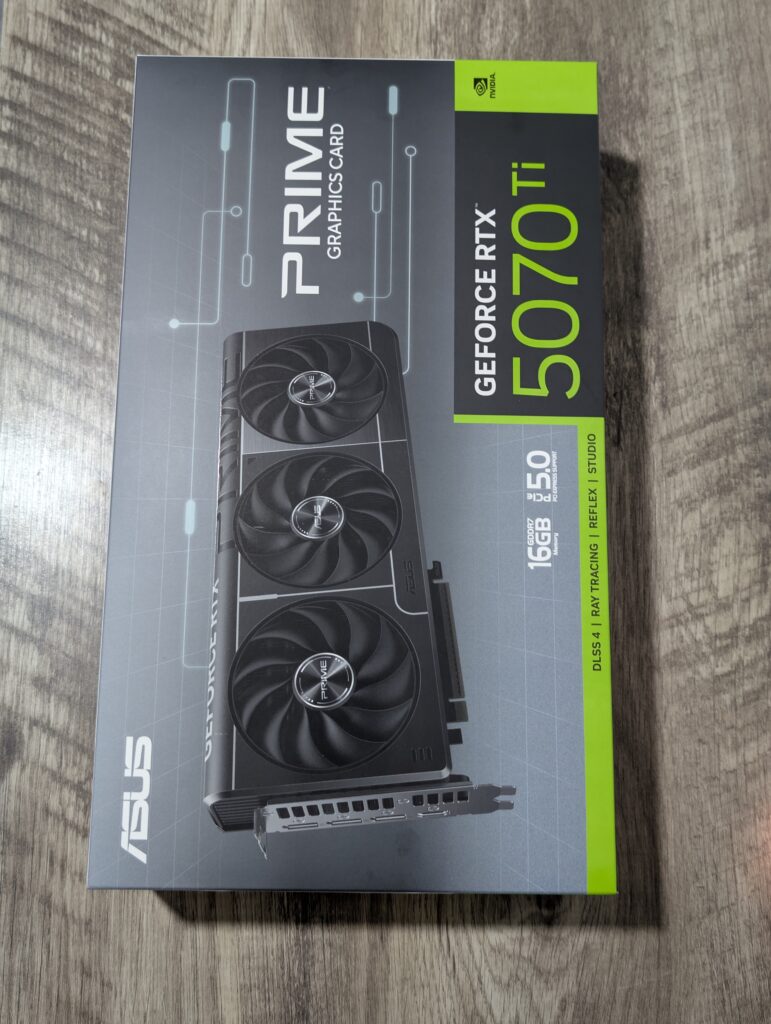Nvidia RTX 5070 Ti Review
Introduction
The Nvidia RTX 5070 Ti is the latest addition to Nvidia’s RTX 5000 series, positioned between the high-performance RTX 5080 and the more budget-friendly RTX 5070. It aims to strike a balance, offering solid performance for gamers and creative professionals without the premium cost of the top-tier models. However, this review will also address the contentious issue of its MSRP, which may not reflect the actual market price at launch due to tariffs and a complete lack of availability. We were provided the ASUS PRIME model for review from Nvidia. Let’s take a look!
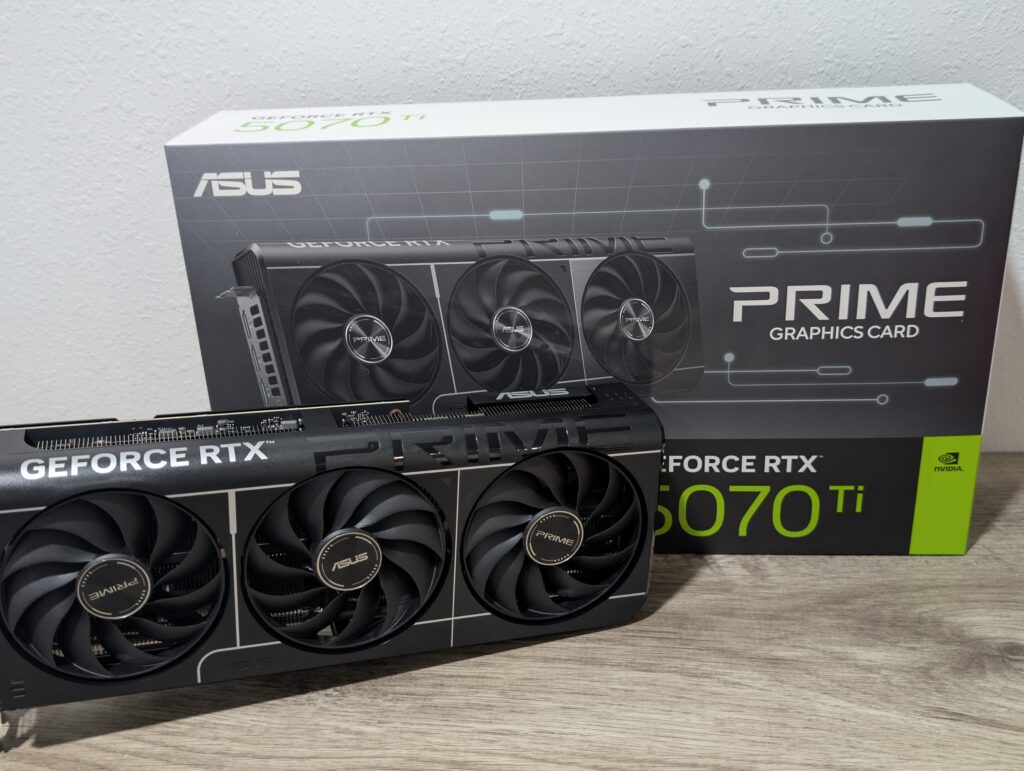
Design and Aesthetics
The RTX 5070 Ti sports the sleek, modern design characteristic of the latest Nvidia cards, maintaining the minimalist aesthetic that has become a hallmark of the RTX series. The card features a compact two-slot design, making it a suitable option for gamers with smaller PC cases who still demand powerful performance.

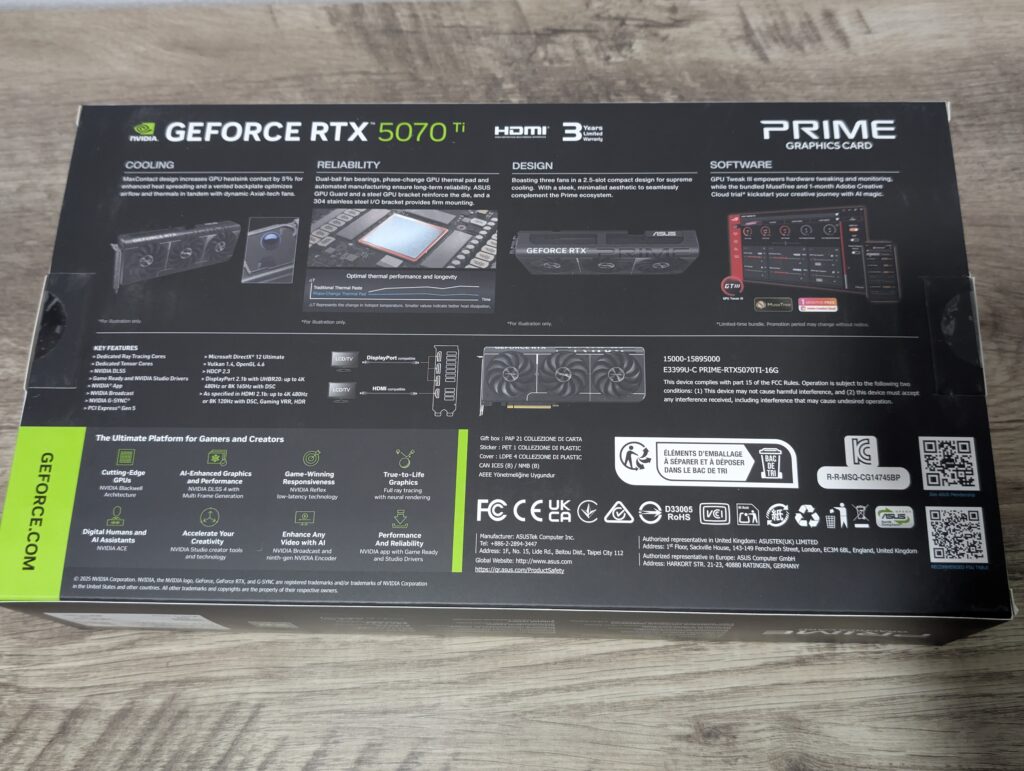
The thermal design has also been refined, featuring improved heatsink and airflow dynamics, promising better cooling efficiency under load. The ASUS Prime model has a very nice three fan design with a performance or quiet mode slider that is easily switched.
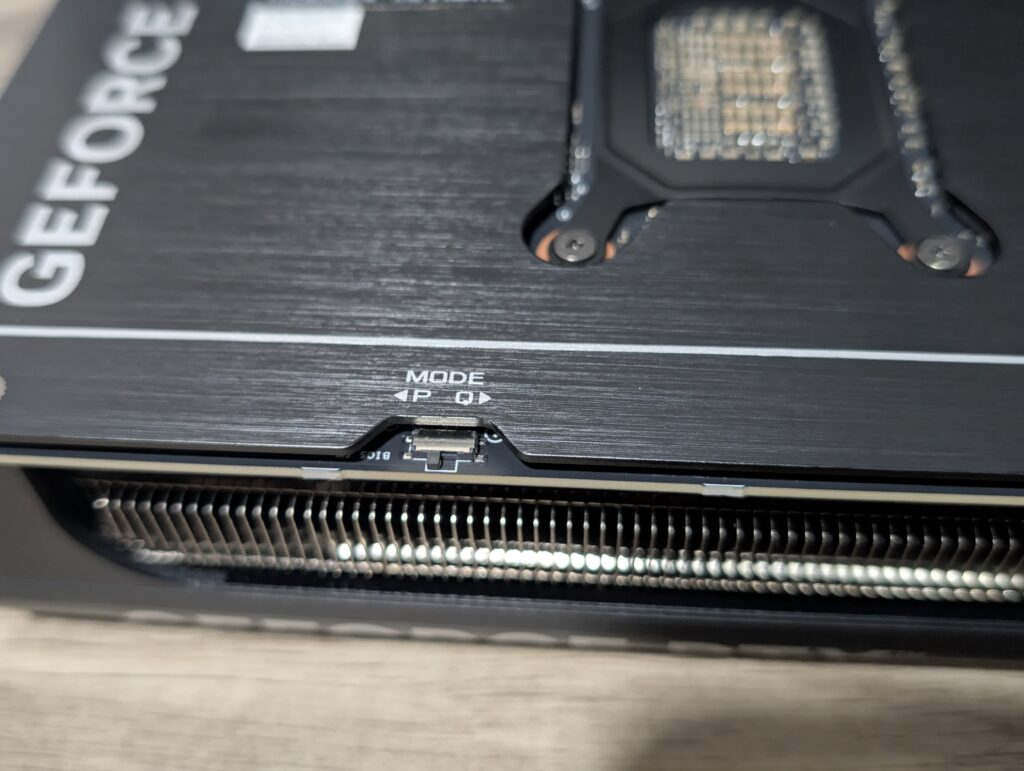
Performance
Performance-wise, the RTX 5070 Ti offers significant improvements over its predecessor, the RTX 4070 Ti. It is equipped with enhanced Tensor Cores and RT Cores, making it adept at handling AI-driven tasks and ray tracing more effectively than earlier models.
- 1080p Gaming: The RTX 5070 Ti performs exceptionally well at this resolution, delivering high frame rates in all but the most demanding games. It is somewhat overqualified for 1080p, making it a future-proof choice for gamers not yet ready to jump to higher resolutions.
- 1440p Gaming: This is where the RTX 5070 Ti shines. It delivers consistently high frame rates, ensuring smooth gameplay in modern titles with high settings. The card strikes an excellent balance between cost and performance for 1440p gaming.
- 4K Gaming: While capable of running games at 4K, the RTX 5070 Ti may struggle to maintain high frame rates with maximum settings in more recent, graphically intense games. Gamers aiming for 4K will need to adjust settings for optimal performance.
- DLSS and Raster Performance: With DLSS 4, the RTX 5070 Ti achieves more than a 2x performance jump over the RTX 4070 Ti, thanks to the new Multi Frame Generation (MFG) technology. Additionally, it delivers a 30% increase in traditional raster performance, making it an ideal upgrade for GeForce RTX 3070 Ti users.
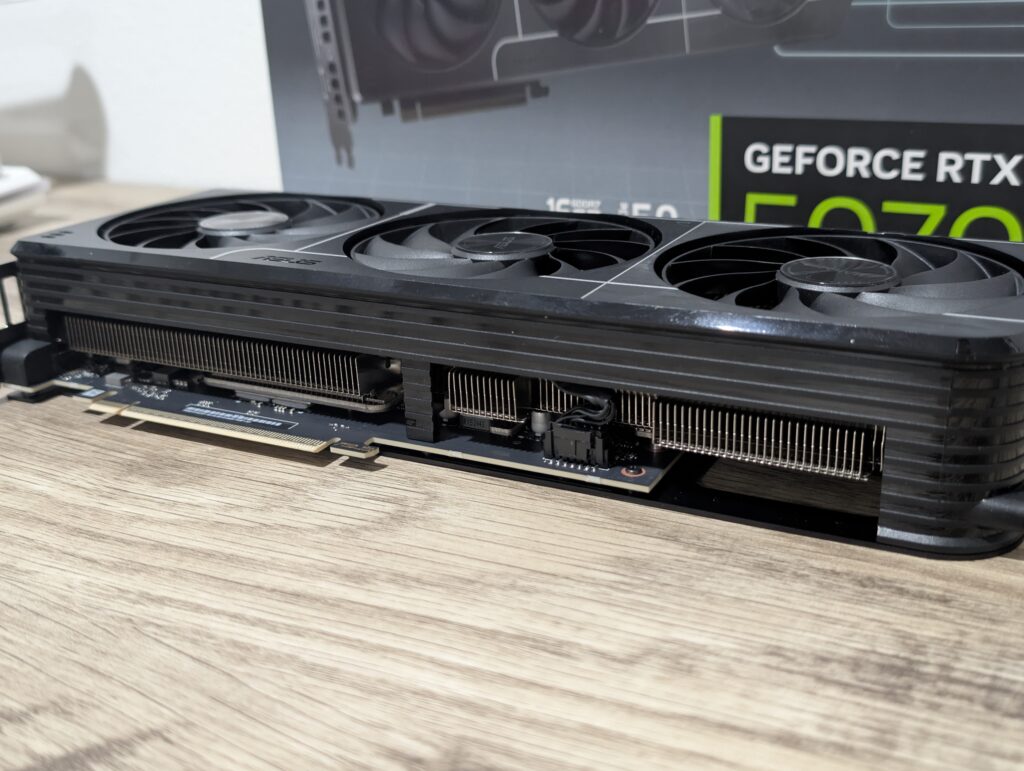
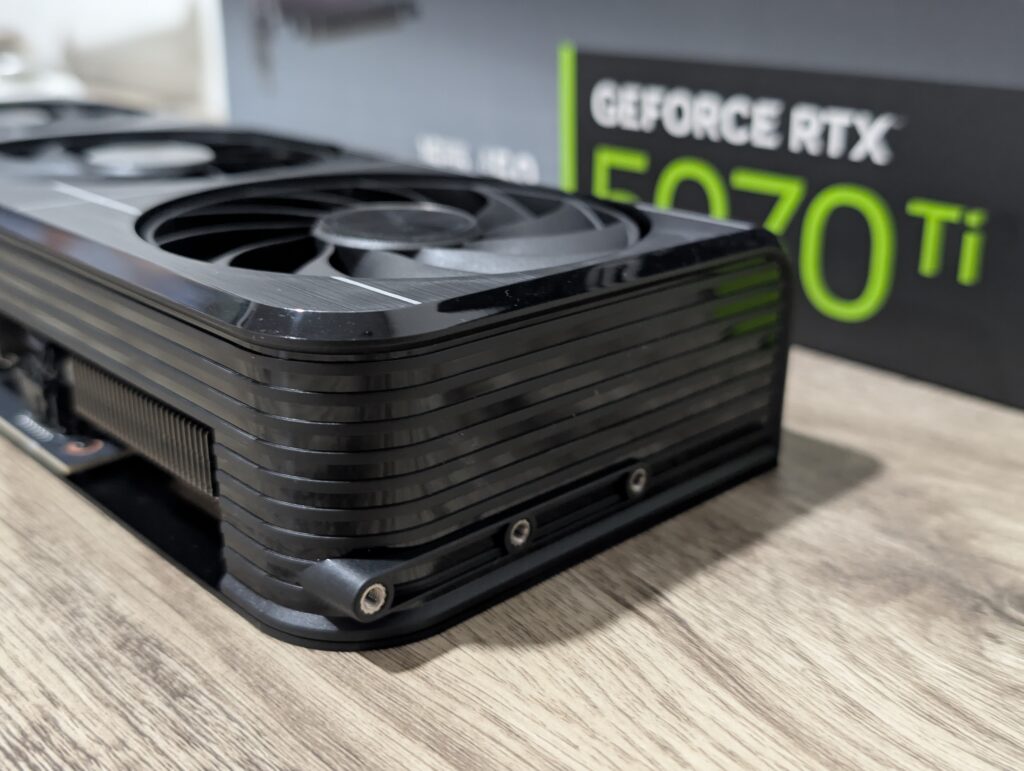
Ray Tracing and DLSS
The RTX 5070 Ti supports Nvidia’s latest DLSS 4 technology, which helps boost frame rates while improving image quality through AI rendering. The ray tracing performance, powered by the updated RT Cores, is commendable and allows for realistic lighting and shadows in supported titles. However, it does impact performance more noticeably at higher resolutions, and its price-to-performance ratio may be making gamers jump to upgrade. For owners of the RTX 3070 series and the like, this is a worthwhile upgrade but the market pricing is going to matter a lot.
Pricing and Availability
The biggest concern lies in the MSRP. Nvidia has set the MSRP for the RTX 5070 Ti at an attractive point, suggesting good value for the technology offered at $749. However, historical trends and current market conditions suggest that actual retail prices will likely be much higher upon launch with many leaks and early published prices indicating there will only be a handful of models at the $749 base point. This model for review that is an MSRP card, was just shown at Microcenter for around $899. There are however multiple models Nvidia has pointed us to that will be available close to MSRP at launch, including:
$749.99:
ASUS NVIDIA GeForce RTX 5070 Ti PRIME Triple Fan 16GB GDDR7 PCIe 5.0 Graphics Card
GeForce RTX 5070 Ti 16G SHADOW 3X
GeForce RTX 5070 Ti 16G SHADOW 3X OC
MSI SHADOW GeForce RTX 5070 Ti 16GB GDDR7 PCI Express 5.0 Graphics Card RTX 5070 TI 16G SHADOW 3X
MSI SHADOW GeForce RTX 5070 Ti 16GB GDDR7 PCI Express 5.0 Graphics Card RTX 5070 TI 16G SHADOW 3X OC
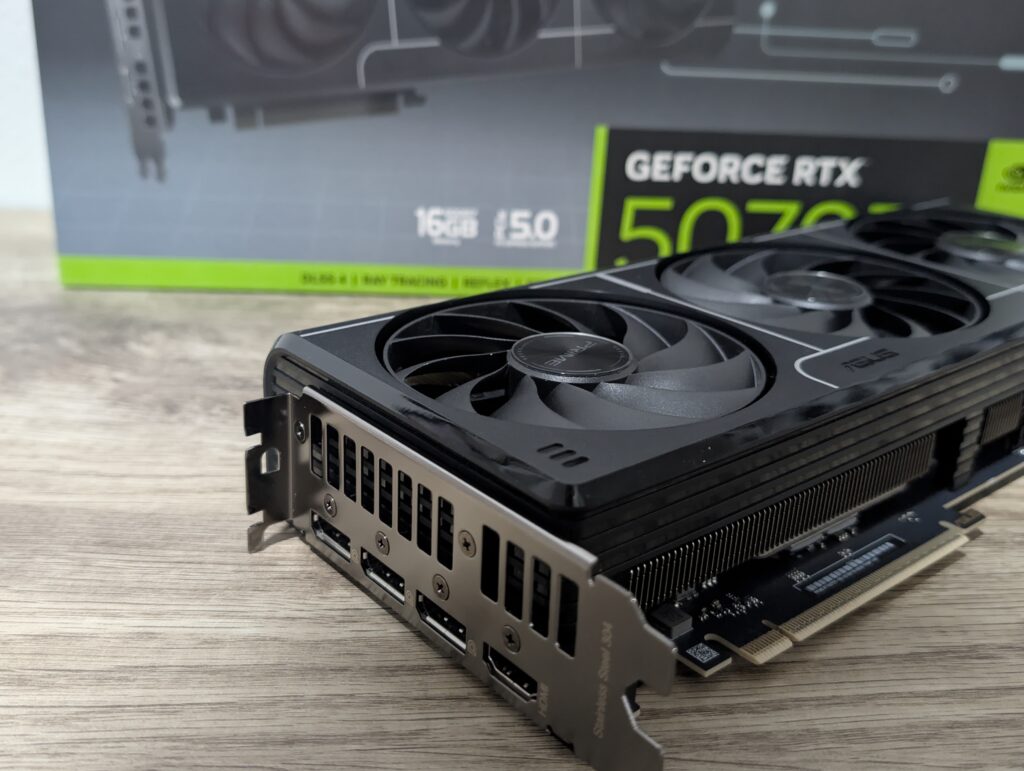
This discrepancy in pricing can be frustrating for consumers expecting to purchase at the official price point. Nvidia continues a trend in previous releases where the MSRP is more of an optimistic baseline than a reflection of market reality. However, there do appear to be several options this worthwhile price point, and we hope there is enough stock. There are many things causing this, of course, but it’s frustrating nonetheless because this is an actually amazing card if the price is right.
Let’s take a look at our Benching Methodology:
Benching Methodology
Test Configuration – Hardware
Test Configuration – Software
GeForce Driver Suite-related
Hybrid & Non-Synthetic Tests-related
Game Benchmarks-related
Frametimes Capture
3840×2160 (4K) Benchmarks
Based on the data from the benchmark tests at 3840×2160 (4K), 2560×1440 (1440p), and 1920×1080 (1080p), the RTX 5070 Ti demonstrates a strong performance improvement over previous generations, particularly the RTX 3070 and RTX 4070. However, its performance gains relative to the RTX 4080 and 4080 Super reveal diminishing returns when considering its price-to-performance ratio.
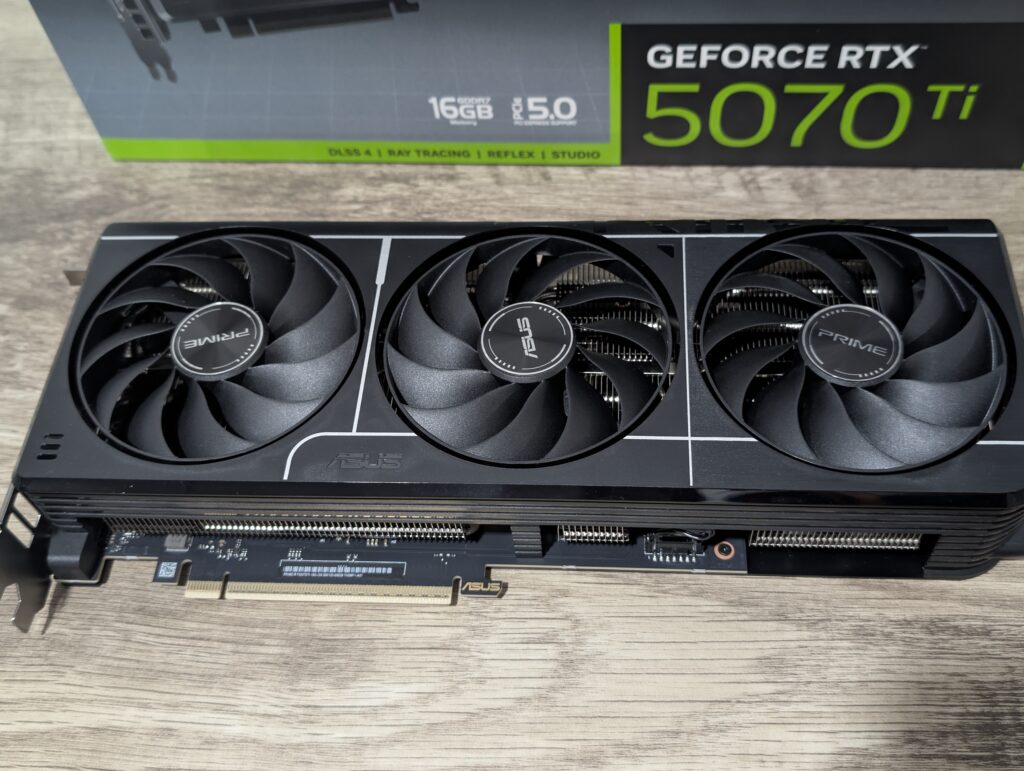
At 4K resolution, the RTX 5070 Ti exhibits a significant boost in performance compared to the RTX 3070, with improvements exceeding 90% in some cases. For instance, in Cyberpunk 2077 Ultra, the RTX 5070 Ti outperforms the RTX 3070 by 97.3%, making it a compelling choice for those upgrading from a previous generation. However, when compared to the RTX 4070, the uplift is more modest, averaging around 59.8%, and in some titles, the improvement is only around 42% (Alan Wake 2 Ultra). Considering titles that include DLSS 4 the gap widens further, but these of course, are generated frames over raw performance. While the technology still needs some work around lighting and small details, putting Cyberpunk 2077 on with max settings enabled with path tracing and getting really high frame rates is still incredible.
Against the RTX 4080 and 4080 Super, the RTX 5070 Ti begins to struggle. It lags behind the RTX 4080 by an average of 3 to 4.5%, with some titles like A Plague Tale Requiem showing only a -3.4% difference, but in more demanding games, the performance gap widens. Compared to the RTX 4080 Super, the RTX 5070 Ti is 6-7% slower on average. This indicates that while the 5070 Ti is an excellent mid-to-high-end option, the 5080 and 4080-class GPUs remain the go-to for Nvidia’s pure 4K gaming performance.
| 3840×2160 Benchmarks | RTX 5090 | RTX 5080 | RTX 5070 Ti | RTX 4080 SUPER | RTX 4080 | RTX 3070 | RTX 3080 | RTX 4060 8GB | RTX 4060 Ti 8GB | XFX RX 7700 XT QICK 319 | AMD RADEON RX 7800 XT | RTX 4070 | RTX 4070 SUPER | RTX 4071 Ti | RTX 4071 Ti SUPER |
|---|---|---|---|---|---|---|---|---|---|---|---|---|---|---|---|
| A Plague Tale Requiem | 101.2 | 89.6 | 75.6 | 80.4 | 78.3 | 24.3 | 38.6 | 28.4 | 31.8 | 42.6 | 49.9 | 47.3 | 55.6 | 60.1 | 66.4 |
| Alan Wake 2 Ultra | 103 | 58.3 | 54.9 | 59.1 | 57.8 | 24.8 | 39.8 | 20.4 | 25.2 | 29.7 | 40.1 | 38.6 | 42.4 | 46.3 | 51.6 |
| Alan Wake 2 Ultra + DLSS 4, x4 Frame Gen | 222.4 | 138.9 | 115.4 | ||||||||||||
| Cyberpunk 2077 Ultra | 102.6 | 72.21 | 58.8 | 59.4 | 58.6 | 29.8 | 43.4 | 21.3 | 25.4 | 32.8 | 42.1 | 29.3 | 38.5 | 45.7 | 53.5 |
| Cyberpunk 2077 Ultra + DLSS 2 Quality | 162.1 | 150.8 | 77.3 | 146.9 | 143.1 | – | – | – | – | – | – | 81 | 102.2 | 103 | 128.6 |
| Cyberpunk 2077 Ultra + DLSS 4, 4x, Quality + RT | 241.5 | 224.89 | 171.5 | ||||||||||||
| Resident Evil 4 Ultra | 135.2 | 97.6 | 77.8 | 81.2 | 80.3 | 41.5 | 54.3 | 27.6 | 32.8 | 48.4 | 59.8 | 49.6 | 57.2 | 62.4 | 68.3 |
| F1 2023 | 215.8 | 157.3 | 142.7 | 149.6 | 147.8 | 70.2 | 102.6 | – | – | – | 108.1 | 85.9 | 100.1 | 114.5 | 126.9 |
| Red Dead Redemption 2 | 150.3 | 79.8 | 72.3 | 74.2 | 73.1 | 35.6 | 52.8 | 24.5 | 33.7 | 43.9 | 55.4 | 45.2 | 54.9 | 58 | 64.2 |
| DOOM Eternal | 223.4 | 191.6 | 174.9 | 180.4 | 179.8 | – | 110.9 | – | – | – | 115.7 | 116.8 | 133.4 | 146.2 | 154.7 |
| The Last of Us Part. 1 | 87.6 | 70.5 | 60.2 | 62.8 | 57.1 | – | 34.1 | – | – | – | 43.7 | 36.5 | 40.7 | 39.9 | 53.6 |
| Hogwarts Legacy, Ultra | 90.2 | 71.1 | 57.1 | 62.4 | 61.7 | – | 38.1 | – | – | – | 41.8 | 32 | 36.8 | 47.4 | 50.8 |
| Hogwarts Legacy, Ultra + DLSS 4, x4 Frame gen | 492.5 | 241.7 | 220.7 |
2560×1440 (1440p) Benchmarks
At 1440p, the RTX 5070 Ti’s advantages over the RTX 3070 remain prominent. The performance uplift averages 100-120%, with games like Cyberpunk 2077 Ultra and Alan Wake 2 Ultra showing nearly double the frame rate. When compared to the RTX 4070, the advantage remains around 42-60%, proving that the 5070 Ti is an excellent upgrade over the 4070 for high-refresh 1440p gaming.
However, the RTX 5070 Ti’s lead diminishes when measured against the RTX 4080 series. It is still ~4-5% slower than the RTX 4080, and against the RTX 4080 Super, the gap extends to 7% or more. This suggests that gamers targeting ultra-high refresh rates at 1440p might still prefer an RTX 4080 despite its higher cost.
| 1440p Benchmarks | RTX 5090 | RTX 5080 | RTX 5070 Ti | RTX 4080 SUPER | RTX 4080 | RTX 4071 Ti SUPER | RTX 3070 | RTX 3080 | RTX 4060 8GB | RTX 4060 Ti 8GB | XFX RX 7700 XT QICK 319 | AMD RADEON RX 7800 XT | RTX 4070 | RTX 4070 SUPER | RTX 4071 Ti |
|---|---|---|---|---|---|---|---|---|---|---|---|---|---|---|---|
| Alan Wake 2 | 122.9 | 100.2 | 87.6 | 92.8 | 91.6 | 84.9 | 49.8 | 66.6 | 40.8 | 47.9 | 60.3 | 72.4 | 64.4 | 74.1 | 78.7 |
| Alan Wake 2 Ultra + DLSS 4, x4 Frame Gen | 375.1 | 191.7 | 184.2 | ||||||||||||
| Cyberpunk 2077 Ultra | 186.38 | 148.61 | 128.8 | 125.8 | 124.6 | 118 | 48.2 | 63 | 52.5 | 67.8 | 79.2 | 90.4 | 66.7 | 80.5 | 89.5 |
| Cyberpunk 2077 + DLSS 2 Quality | 205.6 | 147.3 | 159.1 | 143.8 | 143.1 | 128.6 | 68.5 | 89 | 72.4 | 78.6 | N/A | N/A | 81 | 102.2 | 103 |
| Cyberpunk 2077 + DLSS 3 Quality + RT | – | 172 | 171.6 | 166.4 | 0 | 0 | 87.5 | 90.5 | N/A | N/A | 117 | 130.2 | 146 | ||
| Cyberpunk 2077 Ultra + DLSS 4, 4x, Quality + RT | 388.2 | 327.98 | 276.2 | ||||||||||||
| Resident Evil 4 Ultra | 295.4 | 162.3 | 142.1 | 150.6 | 147.3 | 139.7 | 76.8 | 97 | 74.2 | 60.44 | 139.8 | 164.8 | 101 | 105.3 | 131 |
| Resident Evil 4 Ultra + RT | 244 | 142.6 | 123.3 | 128.3 | 127.6 | 121.4 | 72.9 | 92 | 70.8 | 58.3 | N/A | N/A | 94 | 94.8 | 116 |
| A Plague Tale Requiem | 195.6 | 161.3 | 135.8 | 140.2 | 137.1 | 115.4 | 70.2 | 87.6 | 59.4 | 65.3 | 77.1 | 90.2 | 85.6 | 103.5 | 107.8 |
| F1 2023 | 305.6 | 262.4 | 242.5 | 257.3 | 253.4 | 224.9 | 143.8 | 182.6 | – | – | – | 195.7 | 166.4 | 193.7 | 210.8 |
| Red Dead Redemption 2 | 161.9 | 127.2 | 115.6 | 111.2 | 110.9 | 94.6 | 55.1 | 74.6 | 49.8 | 54.3 | 68.7 | 83.5 | 71.8 | 82.7 | 87.6 |
| DOOM Eternal | 328.1 | 272.9 | 249.1 | 264.9 | 264.5 | 230.7 | – | 169.9 | – | – | – | 187.1 | 178.4 | 204.8 | 226.5 |
| The Last of Us Part. 1 | 124.8 | 107.6 | 95.6 | 98.9 | 98.5 | 88.7 | – | 67.8 | – | – | – | 75.9 | 76.2 | 79.4 | 80.3 |
| Hogwarts Legacy | 147.8 | 117.3 | 105.2 | 110.9 | 110.1 | 95.4 | – | 73.8 | – | – | – | 80.3 | 67.2 | 80.6 | 89.8 |
| Hogwarts Legacy, Ultra + DLSS 4, x4 Frame gen | 504.6 | 262.3 | 249.7 |
1920×1080 (1080p) Benchmarks
| 1080p Benchamrks | RTX 5090 | RTX 5080 | RTX 5070 Ti | RTX 4080 SUPER | RTX 4080 | RTX 3070 | RTX 3080 | RTX 4060 8GB | RTX 4060 Ti 8GB | XFX RX 7700 XT QICK 319 | AMD RADEON RX 7800 XT | RTX 4070 | RTX 4070 Super | RTX 4071 Ti | RTX 4071 Ti SUPER |
|---|---|---|---|---|---|---|---|---|---|---|---|---|---|---|---|
| Alan Wake 2 | 165.7 | 136.8 | 121.8 | 131.3 | 126.1 | 65.6 | 88.2 | 54.6 | 61.2 | 86.8 | 94.3 | 81.5 | 98.6 | 100.4 | 118.2 |
| Alan Wake 2 Ultra + DLSS 4, x4 Frame Gen | 514.2 | 361.4 | 320.2 | ||||||||||||
| Cyberpunk 2077 Ultra | 205.3 | 174.4 | 159.8 | 173.8 | 172.1 | 49 | 125.4 | 89.8 | 95.4 | 114.6 | 129.2 | 118.6 | 142.6 | 153.6 | 165.4 |
| Cyberpunk 2077 Ultra + DLSS 4, 4x, Quality + RT | 414.3 | 379.31 | 300.3 | ||||||||||||
| Resident Evil 4 Ultra | 273.2 | 200.1 | 178.1 | 186.5 | 181 | 77 | 115.6 | 85.3 | 90.3 | 116.2 | 141.9 | 123.2 | 143.3 | 153.2 | 175.6 |
| A Plague Tale Requiem | 305.6 | 208.7 | 177.6 | 194.6 | 189.5 | 89.2 | 122.4 | 88.7 | 93.2 | 107.2 | 120.8 | 121.7 | 140.6 | 153.7 | 169.7 |
| F1 2023 | 352.7 | 262.9 | 235.2 | 259.2 | 254.6 | 142.6 | 183.6 | – | – | – | 194.3 | 190.8 | 193.3 | 210.6 | 227.9 |
| Red Dead Redemption 2 | 198.7 | 157.8 | 128.6 | 133.6 | 132.9 | 66.9 | 85.9 | 60.6 | 65.3 | 86.9 | 99.7 | 88 | 100.3 | 107.4 | 113.2 |
| DOOM Eternal | 377.4 | 320.6 | 299.7 | 312.2 | 311.8 | – | 207.9 | – | – | – | 223.4 | 211.8 | 250.3 | 269.7 | 280.4 |
| The Last of Us Part. 1 | 162.4 | 136.2 | 122.1 | 129.3 | 125.3 | – | 86.5 | – | – | – | 99.7 | 90.1 | 106.4 | 108.6 | 120.8 |
| Hogwarts Legacy | 190.2 | 167.4 | 144.2 | 153 | 151.6 | – | 104.6 | – | – | – | 105.4 | 99.7 | 117.8 | 128.1 | 130.5 |
| Hogwarts Legacy, Ultra + DLSS 4, x4 Frame gen | 491.8 | 307 | 280.5 |
At 1080p, the RTX 5070 Ti shines in delivering extremely high frame rates. It surpasses the RTX 3070 by a substantial margin, with improvements often exceeding 100%, ensuring smooth performance even in the most demanding titles. However, the diminishing returns at higher resolutions also apply here—while the RTX 5070 Ti remains around 40-60% faster than the RTX 4070, the improvements over the RTX 4080 are negligible. In some cases, the RTX 4080 and 4080 Super maintain a 5-7% lead, meaning that for 1080p gaming, a 4080-class card might be overkill.
Conclusion
The Nvidia RTX 5070 Ti is a well-balanced GPU that delivers strong performance, particularly at 1440p and high-refresh 1080p gaming. Its efficient design, improved cooling, and significant performance gains over the RTX 3070 and 4070 make it a compelling upgrade for gamers still on older-generation cards. DLSS 4 support further enhances its longevity, allowing for improved frame rates in demanding titles, making it a forward-thinking choice for those planning to keep their system for years to come.
However, pricing and availability are the biggest concerns surrounding the RTX 5070 Ti. While Nvidia has set an MSRP of $749, market conditions, tariffs, and limited stock often push the actual retail price higher. With early reports indicating that some models will land closer to $899 or more, the value proposition erodes. There are cards at launch at the MSRP of $749.99 and if you can snag one, we would recommend it. At the higher price points, an RTX 4080—especially if discounted or available second-hand—becomes a better buy due to its higher VRAM capacity, better raw performance, and increased longevity for 4K gaming. The only other factor would be how important DLSS 4 is for you.
Another factor to consider is AMD’s current lineup, particularly the RX 7800 XT and the upcoming RX 7900 GRE. The RX 7800 XT is often available for less than $550 but has also recently jumped way up in price, offering strong rasterization performance and higher VRAM, making it a more cost-effective solution for gamers who do not prioritize ray tracing or DLSS. AMD’s FSR 3 is also improving, making the gap between Nvidia’s AI-assisted frame generation and AMD’s alternative smaller over time. DLSS 4 currently has no equal, and its performance increases are smaller, however.
Gamers should truly evaluate their needs, budget, and resolution targets before deciding, as AMD’s offerings could provide better price-to-performance in pure rasterized gaming scenarios. It goes without saying that the inflated pricing right now should be a huge stopping point for many; if you can wait, it would be best to look for a card near MSRP and not pay the scalper pricing.
Ultimately, the RTX 5070 Ti is a fantastic card, but only if it remains at or near MSRP. If prices creep toward $900, it loses appeal, especially when AMD’s alternatives and Nvidia’s own RTX 4080-class GPUs offer better raw performance per dollar. Gamers should watch for sales, check AMD’s competitive pricing, and weigh whether DLSS 4 and ray tracing enhancements justify the cost over alternative GPUs.
Happy Gaming!








